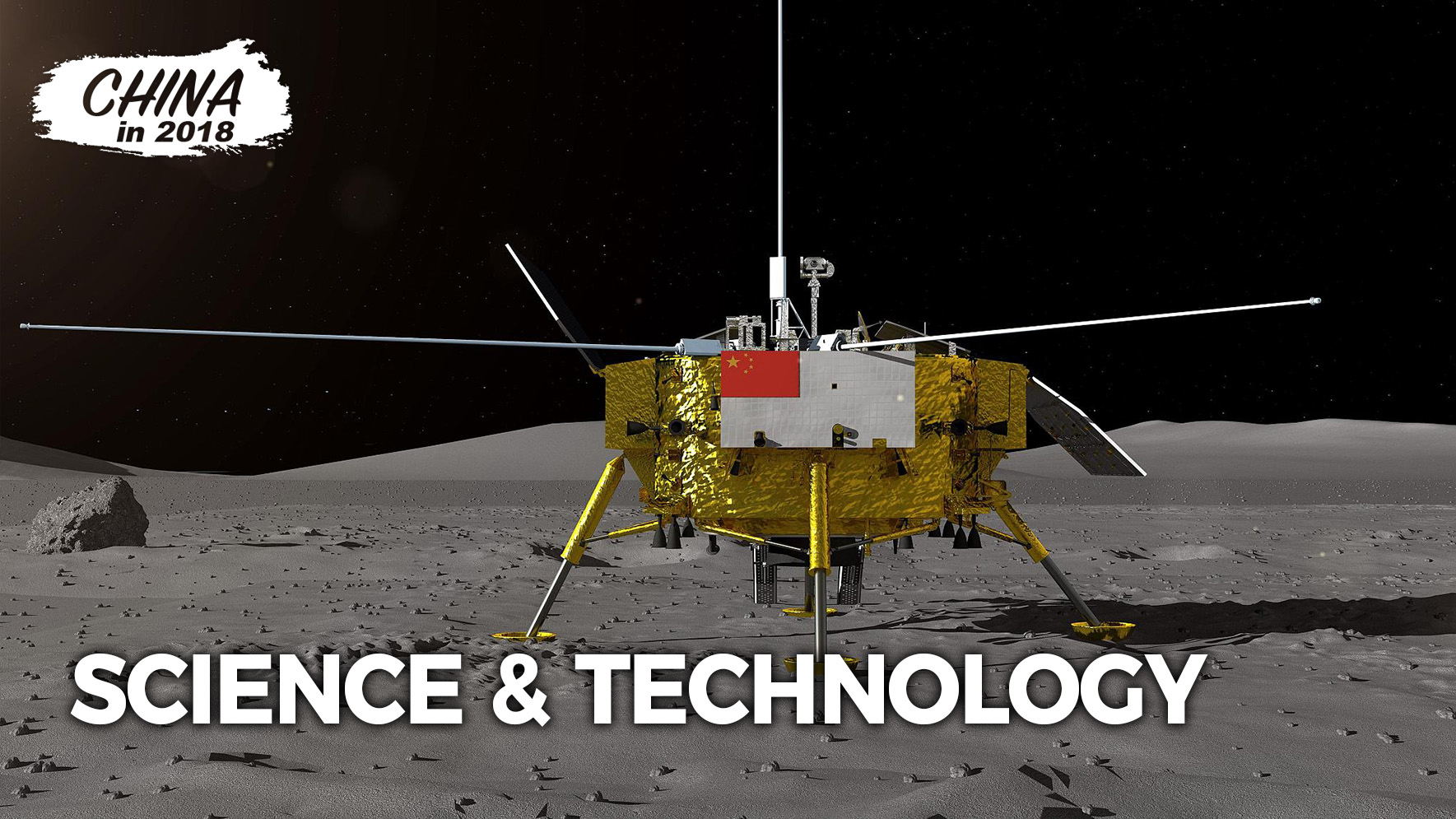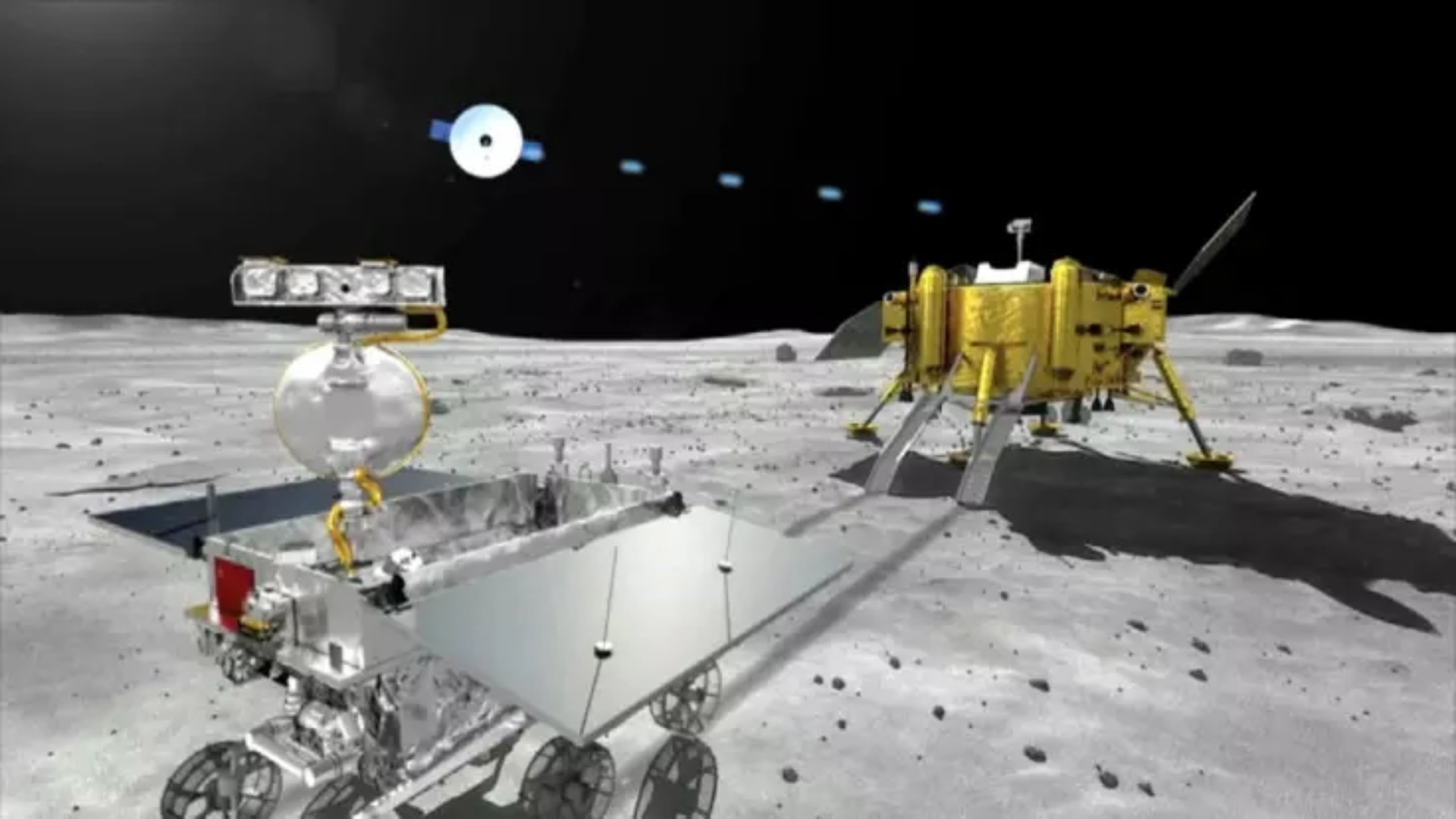
Tech & Sci
08:41, 26-Dec-2018
China in 2018: Strides in cutting-edge technologies
Updated
08:29, 29-Dec-2018
CGTN

"China must aim at the forefront of the cutting-edge science and technology, seize the initiative to innovate, and develop the nation into a major power in science and technology." – Xi Jinping
The lesson from this year's trade war with the United States taught us never ever to become solely dependent on a single entity, especially when talking about high-tech products.
2018 was a big year for innovations in the global tech sector and, although gaps still exist in many areas, China is at the forefront when it comes to certain cutting-edge technologies.
Aerospace ambitions take flight

The relay satellite will send back signals and data between Earth and China's Chang'e-4 lander-rover duo. /CGTN Photo
The relay satellite will send back signals and data between Earth and China's Chang'e-4 lander-rover duo. /CGTN Photo
China's space industry is taking off and had 36 space missions in 2018, accounting for over one-third of the world's total.
From the Chang'e-4 lunar probe to Beidou navigation satellites, the country's space sector has seen many major breakthroughs.
The Queqiao relay satellite, which was launched in May and serves as a bridge to aid the communication between the Earth and the Moon, is the world's first communication satellite operating in the orbit of the Earth-Moon Lagrange Point L2.
It laid the foundation for the Chang'e-4 roving probe to conduct the first-ever soft-landing on the far side of the Moon.
The IT industry embraces upgrades

China's AI industry is on the fast track. /VCG Photo
China's AI industry is on the fast track. /VCG Photo
The trade war with the U.S., which was triggered by a seven-year ban on telecommunications-gear maker ZTE on purchases of core technologies like chips, pushed Chinese tech firms to become more concerned about homegrown know-how.
China has made chip growth one of the top priorities of its "Made in China 2025" strategy. There is a national fund to support tech firms working in the sector, and as of 2017, the fund had invested 118.8 billion yuan (approximately 18.8 billion US dollars) into 67 projects.
Deep learning algorithms, a major branch of AI, have also attracted attention from China's tech community.
Autonomous driving and voice and facial recognition are deep learning-based and were in full swing this year.
A report released by the White House indicated that China has surpassed the U.S. in the number of publications mentioning "deep learning."
The existing strength in AI and the unparalleled access to the huge scale of data needed to train AI algorithms give China a competitive edge in developing advanced technologies in the future.
Leading the way in quantum mechanics

Quantum communication technology is considered one of the most secure information delivery methods at present. /VCG Photo
Quantum communication technology is considered one of the most secure information delivery methods at present. /VCG Photo
Chinese scientists set another world record this August in using quantum mechanics to generate strings of random numbers that will provide unprecedented levels of security to the modern digital world after they impressed the crowd by building the world's longest terrestrial Quantum Key Distribution network last September.
Race in the quantum field has long been fierce with the technology hailed as a potential game-changer during a time when cybersecurity and privacy have become a constant concern for almost everyone.
China is now doubling down on the technology by investing tens of billions of dollars for research centers dedicated to quantum information sciences.
The nation is striving to set up the first-ever global quantum communication network by around 2030, through linking a satellite constellation consisting of dozens of quantum satellites and ground-based quantum communication networks.

SITEMAP
Copyright © 2018 CGTN. Beijing ICP prepared NO.16065310-3
Copyright © 2018 CGTN. Beijing ICP prepared NO.16065310-3